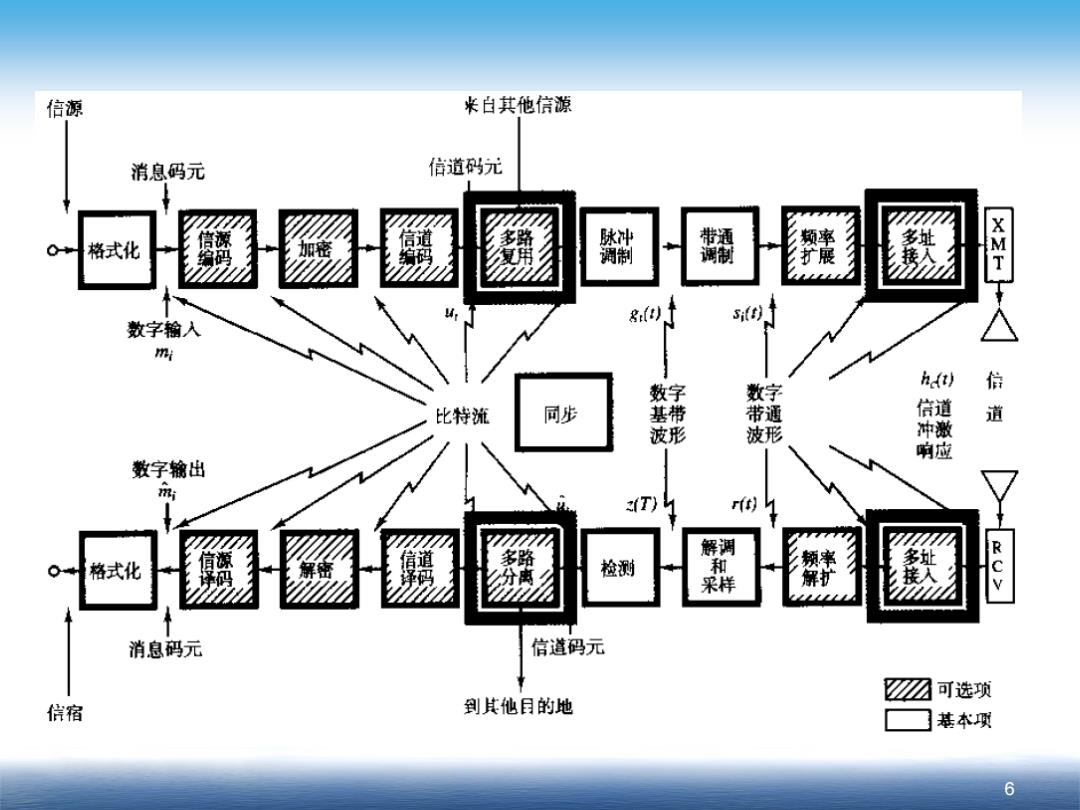
信源 米白其他信源 消息码元 信道码元 52527K 格式化 脉冲 带通 颊率 多址 调制 调制 扩展 XZH Si(t) 数字输入 m 数字 数字 hd(t) 信 比特流 同步 基带 带通 信道 道 波形 波形 冲激 响应 数字输出 m T) r(t) 名路 解调 检测 颜率 多址 格式化 采样 解扩 KU> 消息码元 信道码元 ☑ 可选项 信宿 到其他目的地 基本项 6
6
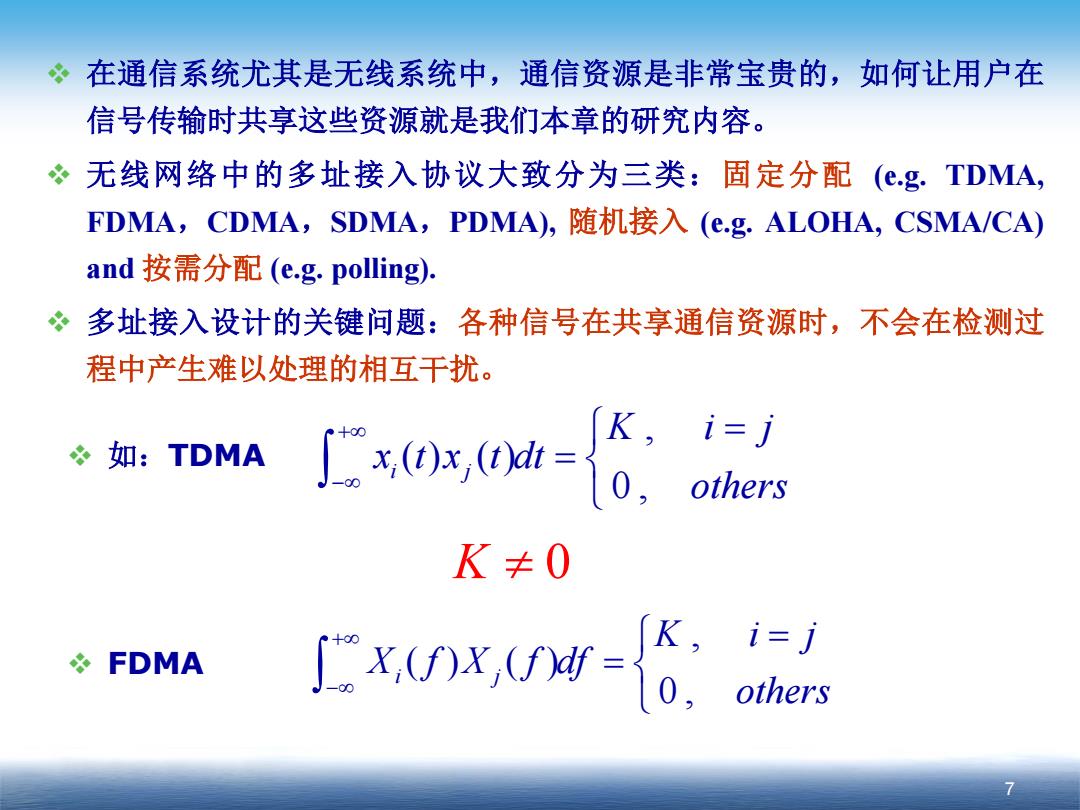
在通信系统尤其是无线系统中,通信资源是非常宝贵的,如何让用户在 信号传输时共享这些资源就是我们本章的研究内容。 无线网络中的多址接入协议大致分为三类:固定分配(e.g.TDMA, FDMA,CDMA,SDMA,PDMA),随机接入(e.g.ALOHA,CSMA/CA) and按需分配(e.g.polling), 多址接入设计的关键问题:各种信号在共享通信资源时,不会在检测过 程中产生难以处理的相互干扰。 如:TDMA ∫x④x,oh={d,others K,i=j K≠0 K,i=J FDMA others
7 在通信系统尤其是无线系统中,通信资源是非常宝贵的,如何让用户在 信号传输时共享这些资源就是我们本章的研究内容。 无线网络中的多址接入协议大致分为三类:固定分配 (e.g. TDMA, FDMA,CDMA,SDMA,PDMA), 随机接入 (e.g. ALOHA, CSMA/CA) and 按需分配 (e.g. polling). 多址接入设计的关键问题:各种信号在共享通信资源时,不会在检测过 程中产生难以处理的相互干扰。 如:TDMA FDMA , () () 0 , i j K ij x t x t dt others +∞ −∞ = = ∫ , () () 0 , i j K ij X f X f df others +∞ −∞ = = ∫ K ≠ 0
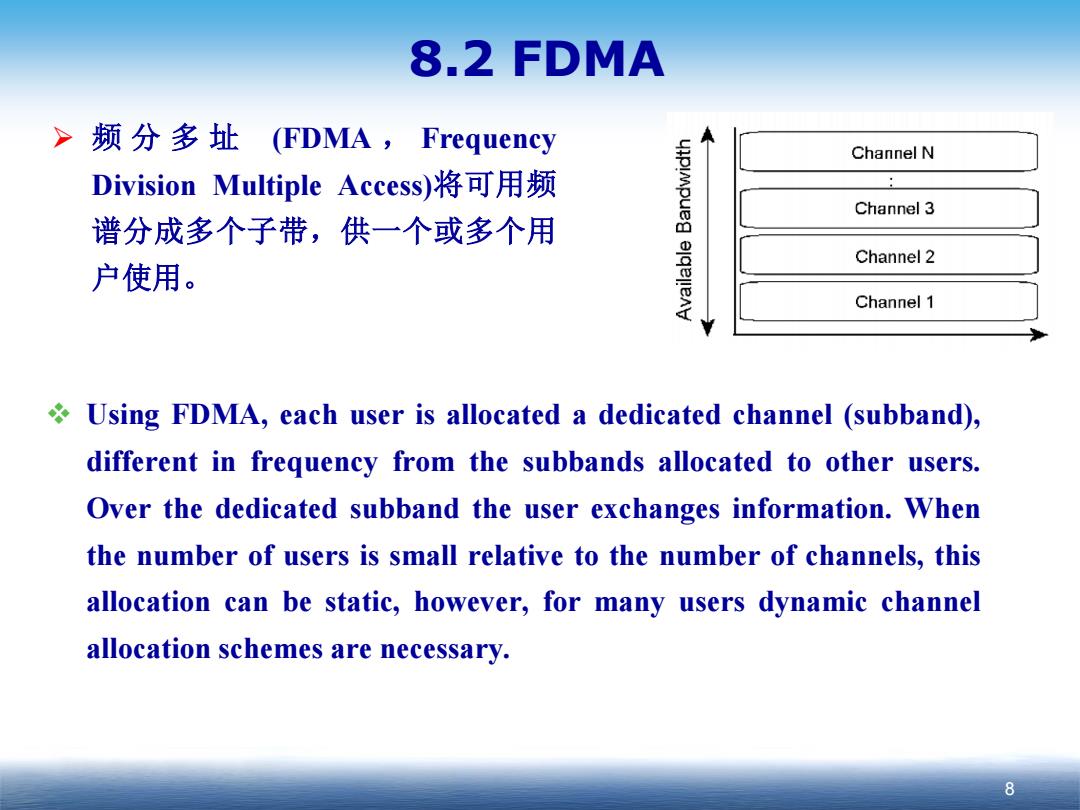
8.2 FDMA >频分多址(FDMA,Frequency Channel N Division Multiple Access)将可用频 Channel 3 谱分成多个子带,供一个或多个用 Channel 2 户使用。 Channel 1 Using FDMA,each user is allocated a dedicated channel (subband), different in frequency from the subbands allocated to other users. Over the dedicated subband the user exchanges information.When the number of users is small relative to the number of channels,this allocation can be static,however,for many users dynamic channel allocation schemes are necessary. 8
8 8.2 FDMA Using FDMA, each user is allocated a dedicated channel (subband), different in frequency from the subbands allocated to other users. Over the dedicated subband the user exchanges information. When the number of users is small relative to the number of channels, this allocation can be static, however, for many users dynamic channel allocation schemes are necessary. 频分多址 (FDMA , Frequency Division Multiple Access)将可用频 谱分成多个子带,供一个或多个用 户使用
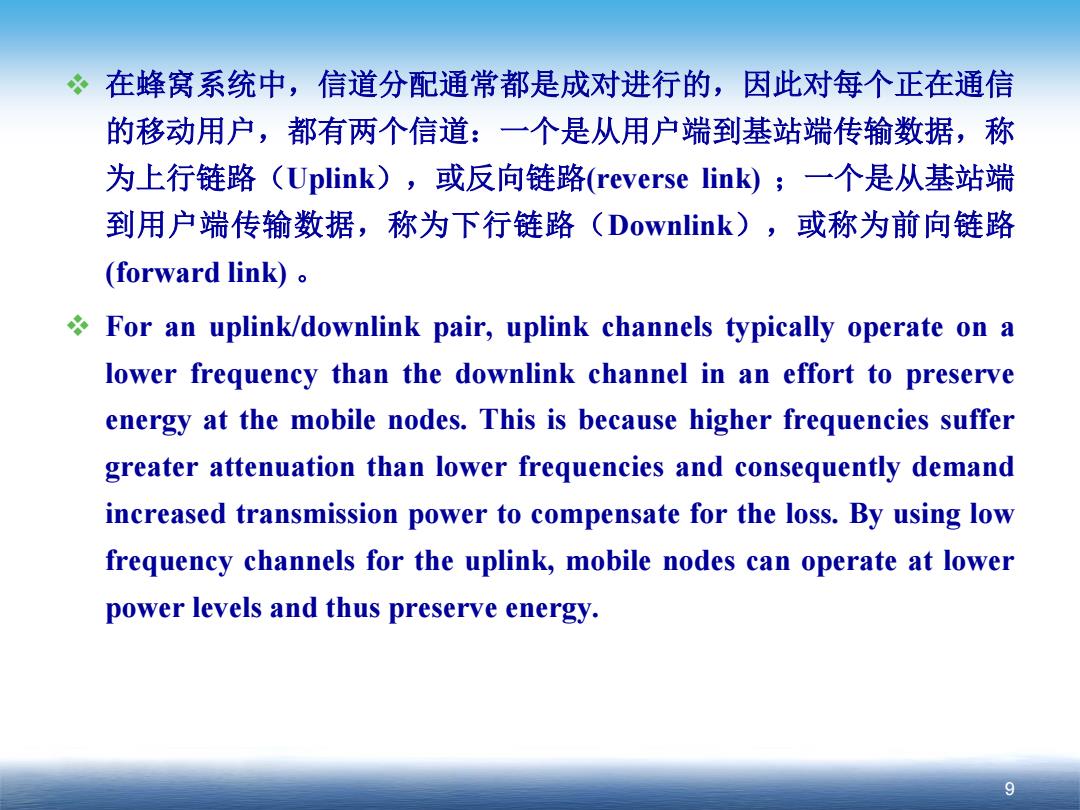
。在峰窝系统中,信道分配通常都是成对进行的,因此对每个正在通信 的移动用户,都有两个信道:一个是从用户端到基站端传输数据,称 为上行链路(Uplink),或反向链路(reverse link);一个是从基站端 到用户端传输数据,称为下行链路(Downlink),或称为前向链路 (forward link). For an uplink/downlink pair,uplink channels typically operate on a lower frequency than the downlink channel in an effort to preserve energy at the mobile nodes.This is because higher frequencies suffer greater attenuation than lower frequencies and consequently demand increased transmission power to compensate for the loss.By using low frequency channels for the uplink,mobile nodes can operate at lower power levels and thus preserve energy
9 在蜂窝系统中,信道分配通常都是成对进行的,因此对每个正在通信 的移动用户,都有两个信道:一个是从用户端到基站端传输数据,称 为上行链路(Uplink),或反向链路(reverse link) ;一个是从基站端 到用户端传输数据,称为下行链路(Downlink),或称为前向链路 (forward link) 。 For an uplink/downlink pair, uplink channels typically operate on a lower frequency than the downlink channel in an effort to preserve energy at the mobile nodes. This is because higher frequencies suffer greater attenuation than lower frequencies and consequently demand increased transmission power to compensate for the loss. By using low frequency channels for the uplink, mobile nodes can operate at lower power levels and thus preserve energy
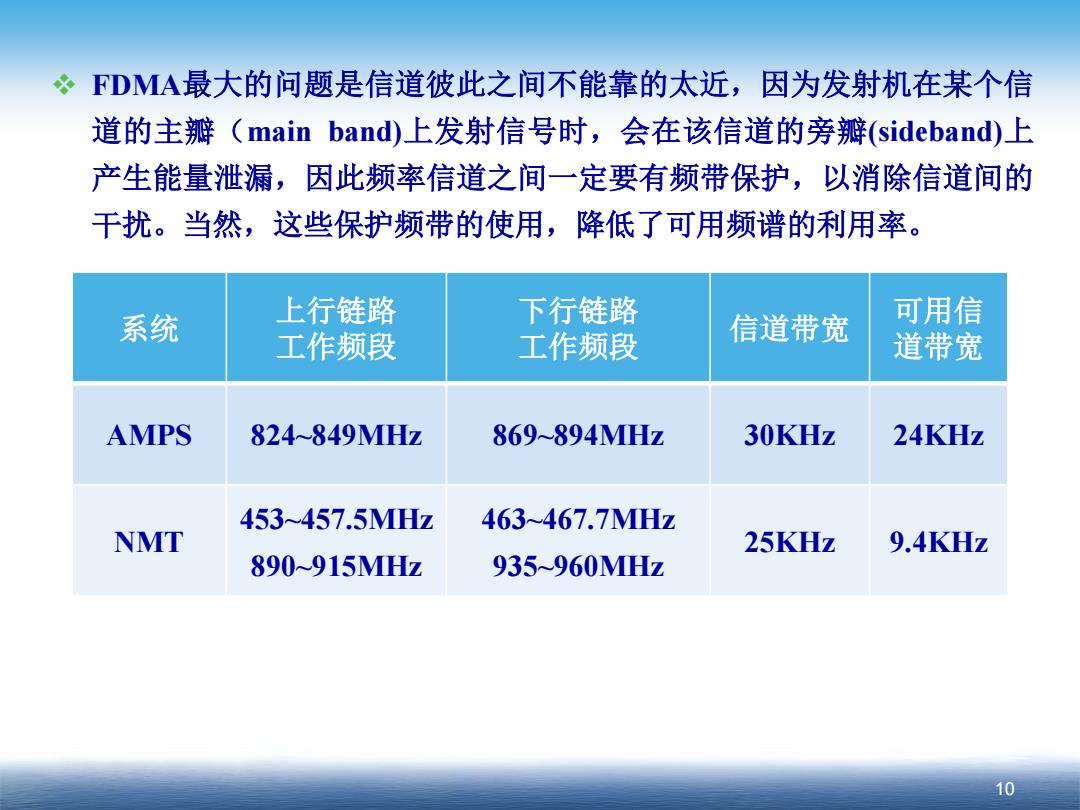
。FDMA最大的问题是信道彼此之间不能靠的太近,因为发射机在某个信 道的主瓣(main band)上发射信号时,会在该信道的旁瓣(sideband)上 产生能量泄漏,因此频率信道之间一定要有频带保护,以消除信道间的 干扰。当然,这些保护频带的使用,降低了可用频谱的利用率。 系统 上行链路 下行链路 信道带宽 可用信 工作频段 工作频段 道带宽 AMPS 824849MHz 869~894MHz 30KHz 24KHz 453457.5MHz 463467.7MHz NMT 25KHz 9.4KHz 890~915MHz 935~960MHz 10
10 FDMA最大的问题是信道彼此之间不能靠的太近,因为发射机在某个信 道的主瓣(main band)上发射信号时,会在该信道的旁瓣(sideband)上 产生能量泄漏,因此频率信道之间一定要有频带保护,以消除信道间的 干扰。当然,这些保护频带的使用,降低了可用频谱的利用率。 系统 上行链路 工作频段 下行链路 工作频段 信道带宽 可用信 道带宽 AMPS 824~849MHz 869~894MHz 30KHz 24KHz NMT 453~457.5MHz 890~915MHz 463~467.7MHz 935~960MHz 25KHz 9.4KHz